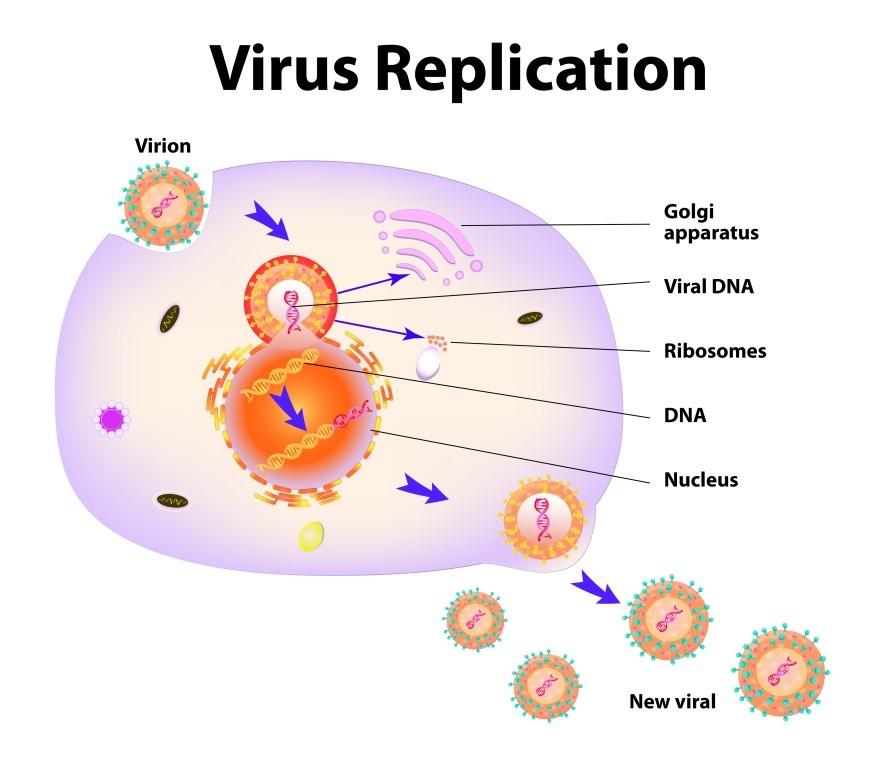
3 minute read
Virus Replication
by AudioLearn
The smallest genome known so far for viral particles is the ssDNA structure of Circoviridae, which codes for only two proteins. The largest genome known so far codes for 2500 proteins, which is the case with pandoraviruses. Many of the genes in viruses will overlap and have nucleic acid segments that code for more than one protein; there are only rarely-seen segments of nucleic acid that don’t code for anything at all. RNA viruses have smaller genome sizes than DNA viruses (in general). Because of this, viruses have segmented genomes that are split into smaller molecules in order to reduce the chances of errors in reading the genome. Errors, as you can imagine, can lead to a virus that is completely ineffective and not competitive.
Viruses have a great capacity to mutate into other forms. This is why viruses like the influenza virus can continue to infect people year after year. It undergoes “antigenic drift” in which there are changes in the DNA or RNA of the virus particle that, while they might not affect the virus particle, they can change the proteins on the surface of the virus, essentially making a “new” virus of the same type, except that it isn’t recognized by the immune system of the host anymore and will infect the host again.
Advertisement
There is an advantage to having segmented genomes or genes on two different molecules. These gene segments can “mix and match” with each other in order to create offspring virus particles that are uniquely different to the original virus particle. In addition, viruses can have their DNA broken up and put together in different ways to make a new viral particle. This is called “genetic recombination” and has been found to be a common way in which viruses evolve. Not every virus particle will evolve in a good way but it takes just one to be advantageous in order to start a new infection or potentially a new species.
VIRUS REPLICATION
As you know, viruses must replicate in order to make new viral particles but they do not do this by means of cell division. They also do not do this themselves. They require the metabolic processes and machinery of the host cell in order to produce copies of themselves. In that sense, they do not divide or truly replicate; instead, they assemble
copies of themselves inside the cell. Figure 11 shows the replication cycle of viral particles:
The viral life cycle is different, depending on the viral species. Suffice it to say, however, that there are six different steps involved in the viral replication cycle. These include the following:
• Attachment—this is the binding of the capsid or envelope on the viral particle to the cell surface of the host. This attachment must be specific to a certain host cell. An example of this is that plant viruses bind to specific plant cells but not to other plant cells and not to animal cells. Even with the HIV virus, it only binds to the CD4 molecule on human T helper cells (types of white blood cells). This makes this a virus that only decreases the T helper cell count in humans, which is dangerous to humans because it affects the entire immune system functioning.
The attachment of an enveloped virus causes the envelope to fuse with host cell.
• Penetration—this involves receptor-mediated endocytosis or membrane fusion.
Endocytosis involves taking in the viral particle that has attached, while membrane fusion happens with enveloped viruses. The virus can enter the cell either way. Plants, animals, and bacteria are completely different in how they are



